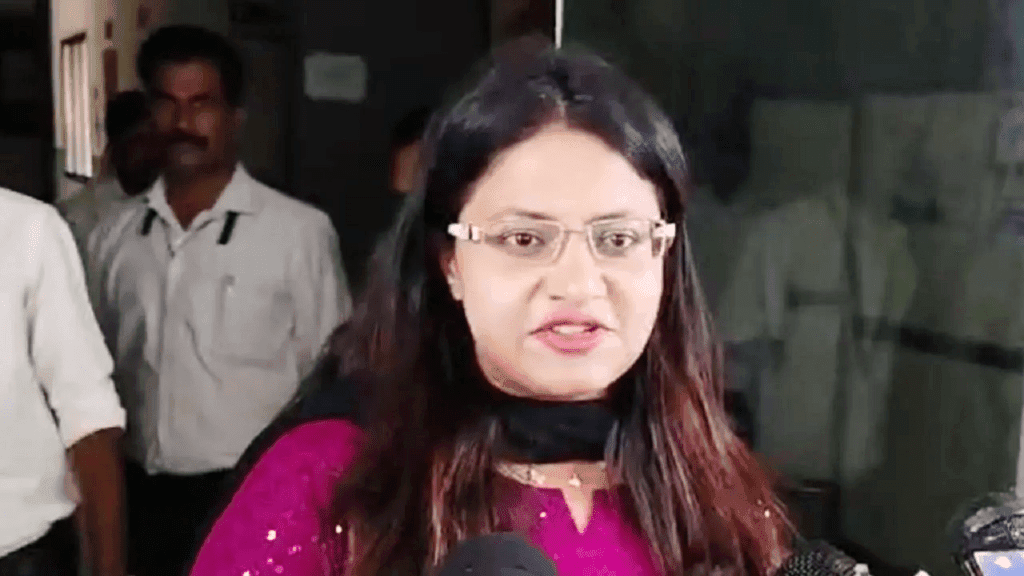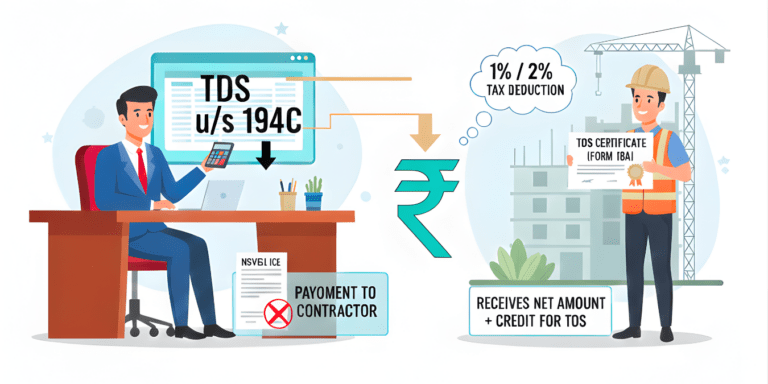
Provision of Exemptions and Deductions in the New Tax Regime: Complete Guide with 2025 Updates
Think the new tax regime is a savings trap? Shockingly, 2025 hides epic deductions! From Rs 25 lakh leave encashment to sneaky NPS boosts, 75% of Indians miss these tax treasures. PwD perks, rental loan hacks—millions are left unclaimed! But one slip could cost you dearly. Will you unlock these secrets before the ITR deadline?
The new income tax regime under Section 115BAC was first introduced in 2020 and revamped in Budget 2023 to make it the default regime from FY 2023-24 onwards (AY 2024-25). While widely perceived as “simpler but with fewer benefits,” the truth is that even in 2025, the new tax regime still allows important exemptions and deductions that taxpayers often overlook.
This guide provides a complete breakdown of exemptions and deductions under the new tax regime in FY 2025-26, with practical examples, expert tips, and comparisons for Indian taxpayers to optimize savings without complicating their tax filing.
Why Understanding Deductions in the New Regime Matters
The new regime isn’t a deduction desert; it’s selective to promote fairness. Post-Budget 2025, it balances lower rates with key benefits for employees, retirees, and PwDs. Ignoring them means overpaying, especially amid rising inflation in cities like Chennai.
CBDT reports 75% of salaried filers in AY 2025-26 missed at least one claim due to old vs. new confusion. For instance, a Hyderabad IT engineer earning Rs 10 lakh could save Rs 15,000 via employer NPS alone.
For context:
- As of FY 2025-26, around 68% of individual taxpayers filed returns under the new tax regime (CBDT data), highlighting its widespread adoption.
- Yet, nearly 7 in 10 employees missed claiming at least one eligible deduction, simply out of confusion between old vs new rules.
By knowing exactly which deductions and exemptions are available, taxpayers can ensure they are not overpaying in this supposedly “simplified” system.
Quick Exemption List for FY 2025-26
Here’s a bookmark-worthy box of allowed perks under the new regime:
- Standard Deduction: Rs 75,000 for salaried (up from Rs 50,000 in old).
- Transport Allowance for PwDs: Rs 3,200/month.
- Conveyance Allowance: For official duties, no cap if documented.
- Travel/Transfer Compensation: Covers fares and daily allowances.
- Official Perquisites: Reimbursements like phone bills, laptops.
- Voluntary Retirement (Sec 10(10C)): Up to Rs 5 lakh.
- Gratuity (Sec 10(10)): Rs 20 lakh for non-govt; full for govt.
- Leave Encashment (Sec 10(10AA)): Rs 25 lakh for non-govt.
- Home Loan Interest (Sec 24): For let-out properties only.
- Gifts: Up to Rs 5,000/year from employer.
- Employer’s NPS (Sec 80CCD(2)): 10% of salary (14% govt).
- Additional Hiring Costs (Sec 80JJAA): 30% for businesses.
- Family Pension Deduction (Sec 57(iia)): 33.3% or Rs 15,000.
- Agniveer Corpus (Sec 80CCH(2)): Full contribution deductible.
This list, updated per Budget 2025, highlights selective retention amid the Income Tax Act overhaul.
Key Exemptions and Deductions Explained with 2025 Insights
Transport Allowances for Persons with Disabilities (PwD)
PwDs in India face unique mobility challenges, from navigating Kolkata’s crowded trains to Pune’s hilly roads. The new regime retains this exemption to foster inclusivity. It’s fixed at Rs 3,200 per month for certified disabilities like blindness or locomotor issues.
No regime switch needed; claim it directly in Form 16. For a Bengaluru PwD earning Rs 6 lakh, this saves Rs 38,400 annually, tax-free.
Conveyance Allowance for Official Duties
Not your daily commute perk, this targets job-related travel. Sales reps in Ahmedabad or field engineers in Gujarat can claim reimbursements without limits if backed by bills.
Example: Raj, a Mumbai executive, gets Rs 4,000 monthly for client visits—fully exempt, reducing his taxable salary seamlessly.
Travel, Transfer, and Tour Compensation
Relocations are common in India’s dynamic job market. This covers airfares, hotel stays, and daily allowances during transfers. Govt employees in border areas like Ladakh benefit most.
In 2025, with remote work rising, hybrid roles see more claims. A Noida transfer could exempt Rs 50,000 in costs.
Official Perquisites and Reimbursements
From employer-provided uniforms in manufacturing hubs like Coimbatore to internet bills for WFH in Gurugram, these stay exempt. Document them via HR portals for easy ITR filing.
Budget 2025 emphasizes digital proofs, aligning with the new Act’s tech focus.
Retirement-Linked Exemptions: Planning for Golden Years
Voluntary Retirement Scheme (VRS) under Section 10(10C)
Mid-career exits in sectors like banking in Kolkata offer one-time exemptions up to Rs 5 lakh. Ideal for professionals eyeing startups post-layoffs.
In 2025, with economic shifts, VRS uptake rose 15% per industry reports. Claim it lifetime once for tax relief.
Gratuity under Section 10(10)
A loyalty reward, exempt up to Rs 20 lakh for private sector folks in Chennai factories or IT parks. Govt servants get full exemption, a boon for retirees in Shimla.
Example: Anita, retiring after 25 years in Delhi, pockets Rs 15 lakh tax-free—crucial for post-retirement funds.
Leave Encashment under Section 10(10AA)
Cashing unused leaves? Non-govt employees get Rs 25 lakh exempt, revised in 2023 and retained in 2025. Perfect for long-tenured staff in Hyderabad pharma firms.
Amid work-life balance talks, encash strategically to avoid tax hits.
Property and Asset-Linked Exemptions in Urban India
Interest on Home Loan for Let-Out Properties (Section 24)
Self-occupied loans? No go in new regime. But rental properties in booming markets like Bengaluru allow interest deductions up to rental income.
For a Pune landlord with Rs 2 lakh interest on a Rs 1.5 lakh rent, deduct fully—offsetting losses. 2025's rising rents make this golden.
Employer Gifts up to Rs 5,000
Festive bonuses like Diwali vouchers from Mumbai corporates remain exempt. In India's gifting culture, this adds cheer without tax worry.
Track multiple gifts; exceed Rs 5,000, and it's taxable.
Employer Contribution Deductions: Boosting Savings
Employer's NPS Contribution (Section 80CCD(2))
A standout perk: 10% of basic + DA exempt (14% for govt). For a Lucknow govt teacher at Rs 50,000 basic, Rs 7,000 monthly saves big.
2025 data: NPS subscribers hit 1.2 crore, with new regime adopters claiming 20% more. Push HR for optimal structuring.
Additional Employee Hiring Costs (Section 80JJAA)
Business owners in Gujarat's MSME belt claim 30% extra on new hires' costs if they work 240+ days. Fuels job creation post-2025 budget's employment focus.
Example: A startup in Bangalore hires 10; deduct Rs 3 lakh extra.
Pension and Defense-Linked Deductions
Standard Deduction on Family Pension (Section 57(iia))
Widows or heirs in rural Rajasthan get 33.3% or Rs 15,000 off pension. Simple yet vital for dependents.
Agniveer Corpus Fund (Section 80CCH(2))
Post-Agnipath, full contributions deduct—employee and govt shares. Young recruits from Punjab villages secure futures tax-free.
How-to Steps: Claiming Exemptions in the New Regime
- Review Form 16: Spot exempt allowances like conveyance.
- Gather Docs: Bills for perquisites, certificates for PwD.
- Use ITR Portal: Select new regime; auto-populate deductions.
- File by July 31: Avoid penalties; use e-verify.
- Consult CA: For complex cases like rentals.
Follow these for seamless filing in 2025's digital era.
Pro Tips to Maximize Benefits from an Indian Taxpayer's View
- Salary Restructuring: Negotiate NPS hikes with Mumbai employers for tax-free growth.
- Retirement Roadmap: Time VRS with gratuity for max exemptions, as seen in PSU exits.
- PwD Optimization: Register disabilities via UDID for transport claims.
- Rental Hacks: Declare surplus homes as let-out in high-rent cities like Delhi.
- NPS Push: Govt employees leverage 14% for retirement corpus amid inflation.
These tips, drawn from real filers on tax subreddits, save lakhs.
Common Mistakes Indian Taxpayers Make in 2025
- Mixing regimes: Claiming old perks like 80C in new.
- Overlooking NPS: 40% miss employer shares per surveys.
- Ignoring docs: Undocumented conveyance gets taxed.
- Self-occupied loans: Wrongly deducting interest.
- Forgetting limits: Exceeding gift or encashment caps.
Avoid these; use apps like ClearTax for checks.
Comparison: Old vs New Regime in FY 2025-26
| Feature | Old Regime | New Regime (2025) |
| Basic Exemption | Rs 2.5L (individuals) | Rs 4L |
| Top Rate Threshold | 30% from Rs 10L | 30% from Rs 24L |
| Standard Deduction | Rs 50,000 | Rs 75,000 |
| 80C/80D Deductions | Full basket | None, except select |
| Key Exemptions | All | Selective (NPS, gratuity, etc.) |
| Nil Tax Up To | Rs 5L (with rebate) | Rs 12L (rebate) + std ded |
New wins for mid-income earners post-Budget 2025.
Final Thought: Smart Tax Planning in India's New Regime Era
The 2025 new regime evolves from "simple but sparse" to "balanced and beneficial," per the Income Tax Act's modernization. With nil tax up to Rs 12.75L for salaried and retained exemptions, it's ideal for most Indians.
Next steps: Audit your payslip for NPS, file early, and switch regimes if high deductions suit. Consult a CA today—don't leave money on the table. Your tax savings start now!

































